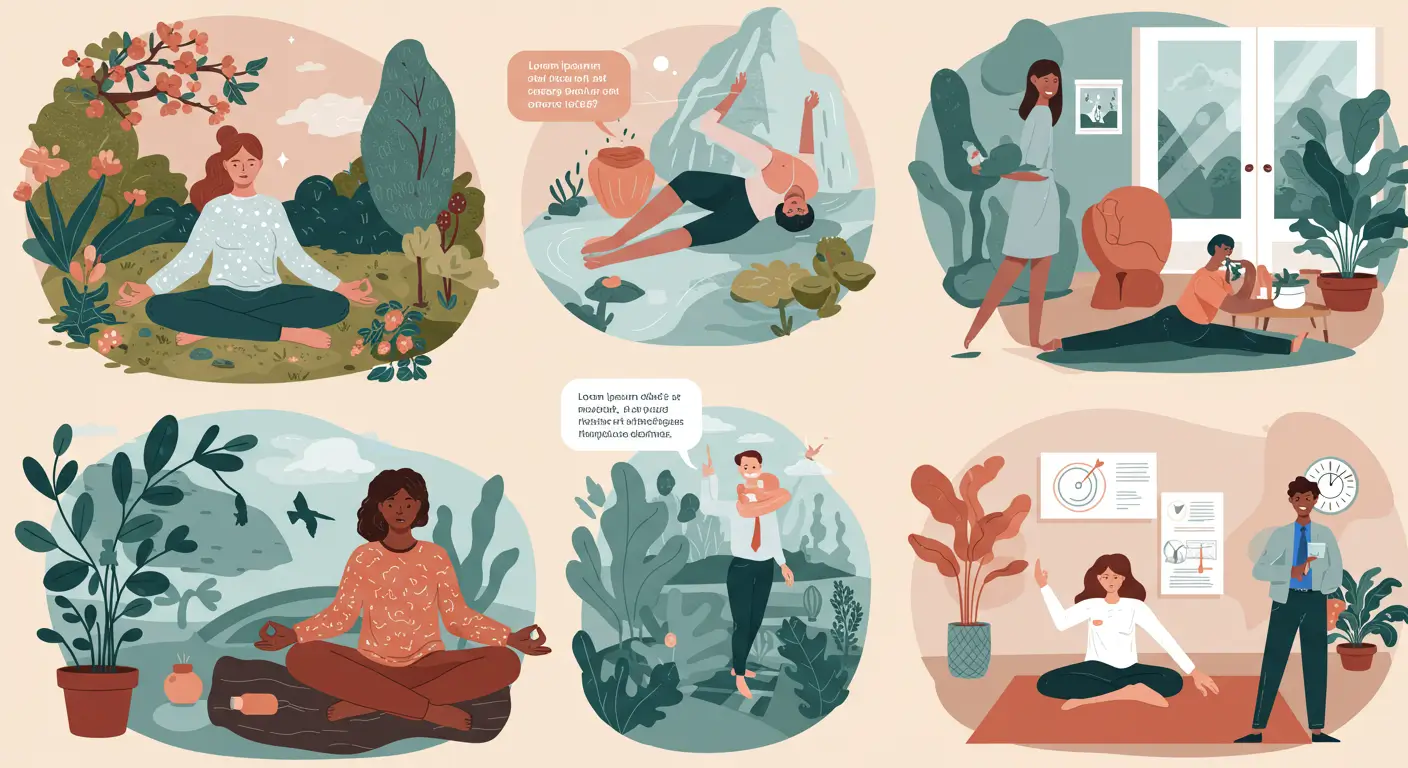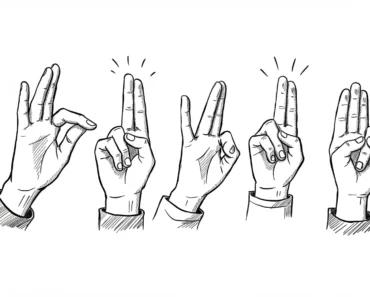Learning to draw a cat opens up one of the most rewarding subjects in animal art. Cats possess elegant proportions, expressive features, and graceful movements that challenge artists while providing endless inspiration.
This guide teaches you everything needed to create realistic cat drawings, from basic sketches to detailed portraits. Whether you want to capture your pet’s personality or develop animal drawing skills, mastering cat anatomy and proportions forms the foundation for stunning feline artwork.
Start with simple shapes and patient observation to draw a cat that captures its unique grace.
Understanding Cat Anatomy and Proportions
Basic Cat Body Structure
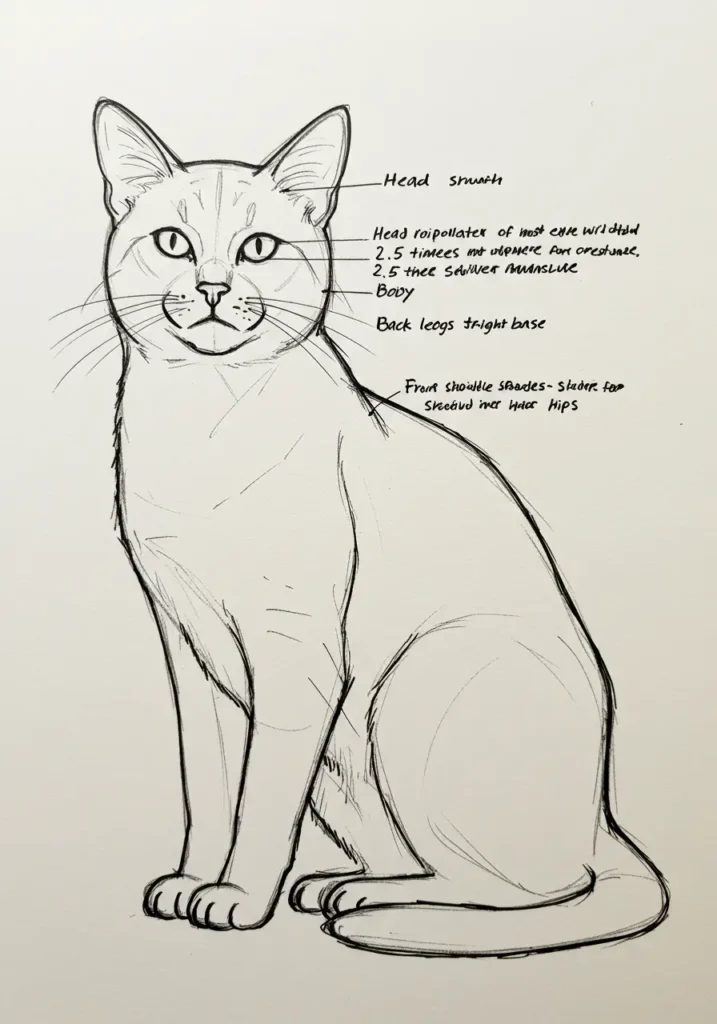
Before you draw a cat, understand its anatomy for accurate proportions:
| Component | Description |
|---|---|
| Head | Triangular, 2.5 times eye width. |
| Body | 4-5 head lengths from nose to tail base. |
| Legs | Front legs straight, back legs muscular. |
Cats have flexible spines for dramatic curves, with shoulder blades and hips creating distinct silhouettes.
Essential Materials for Cat Drawing
Traditional Drawing Supplies
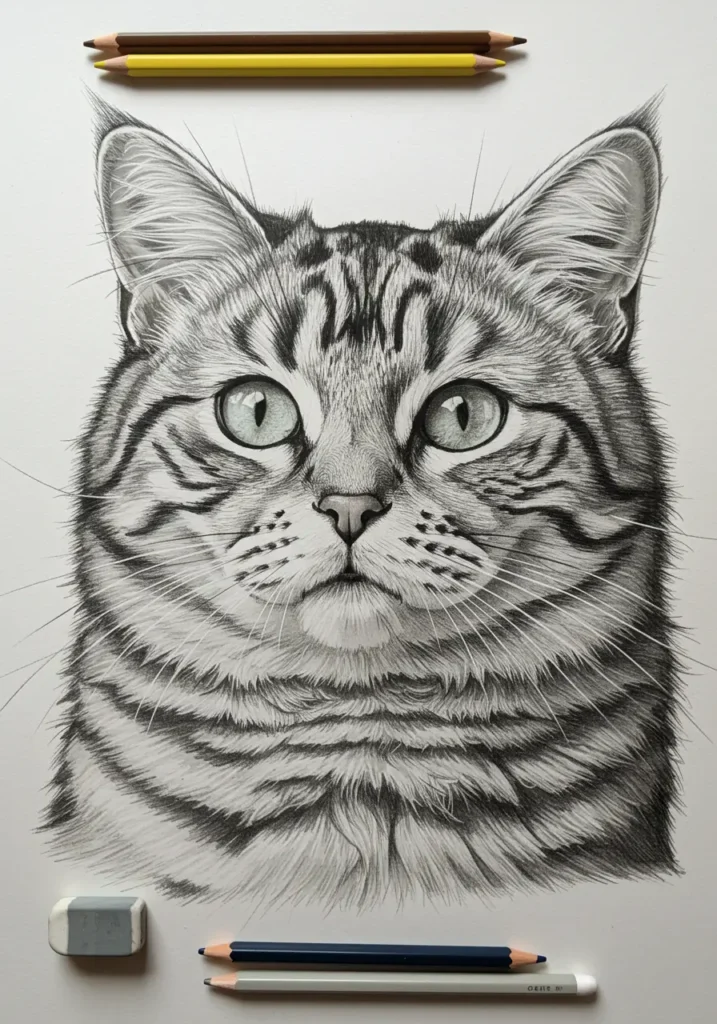
- Pencils: 4H for light lines, 6B for shadows, HB for general sketching.
- Paper: Smooth Bristol board for detailed fur; sketch paper for practice.
- Erasers: Kneaded for gentle lifts, white vinyl for clean removals.
- Blending Tools: Tortillons for fur gradients; cotton swabs for large areas.
Digital Drawing Options
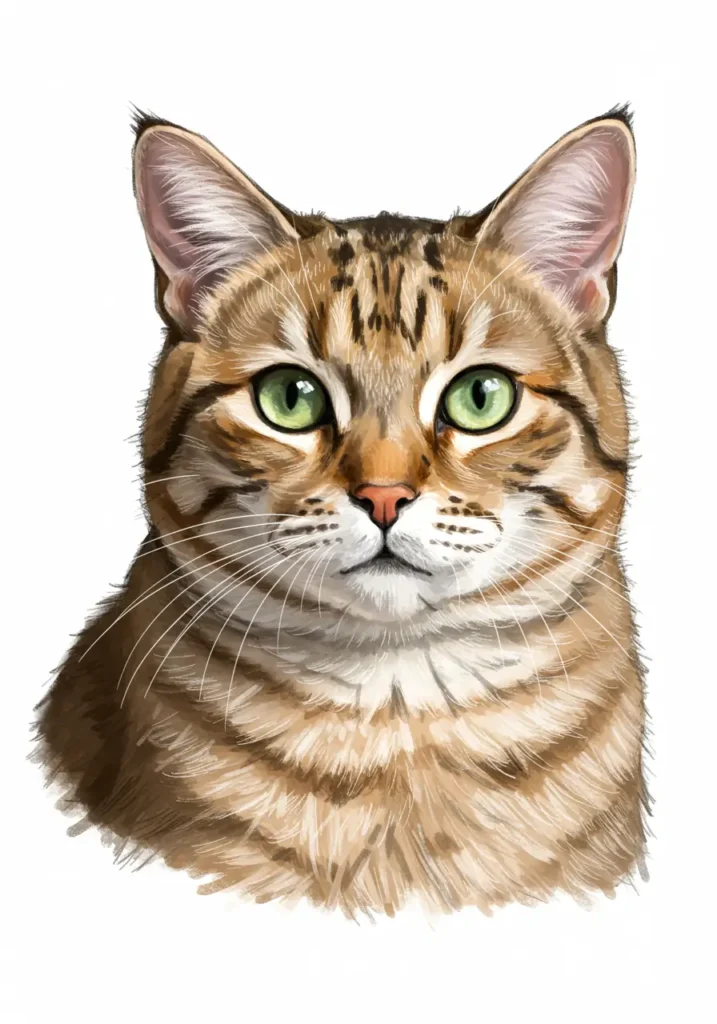
- Tablets: Wacom Intuos or iPad Pro for natural drawing.
- Software: Procreate for beginners, Photoshop for pros, Krita for free options.
- Brushes: Textured brushes mimic pencils for realistic fur.
Step-by-Step Guide: Drawing a Cat Face
Step 1: Basic Head Shape

Draw a circle for the skull, add a smaller overlapping circle for the muzzle. Add vertical and horizontal guidelines for symmetry.
Step 2: Facial Features
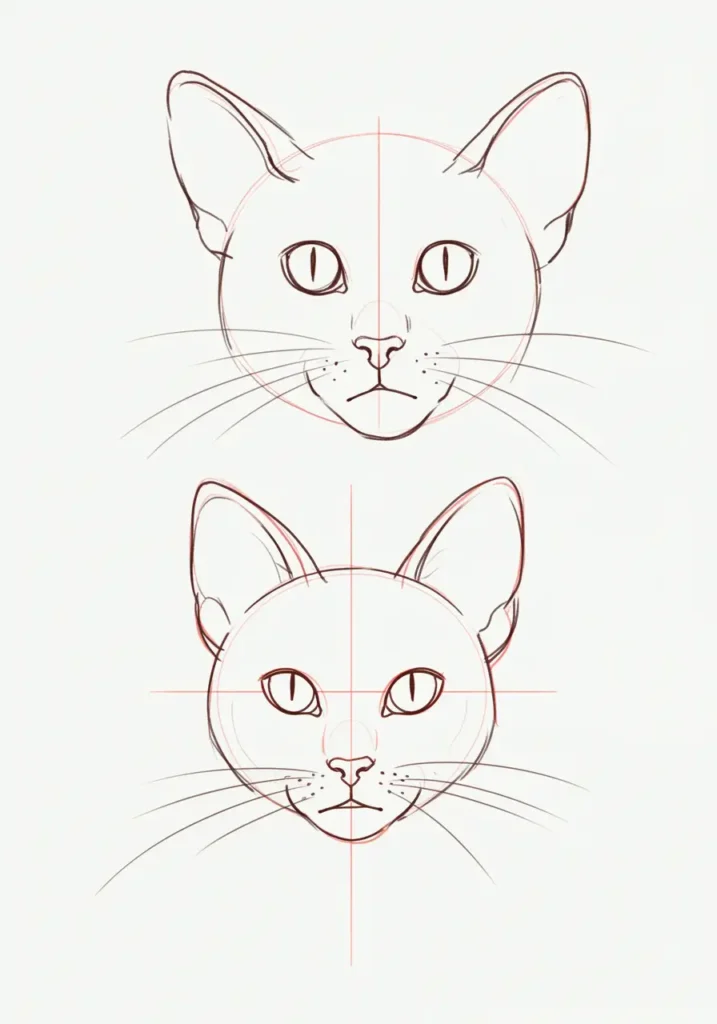
Place eyes along the horizontal guideline, one eye-width apart. Add a small triangular nose and subtle mouth below.
Step 3: Define Eyes
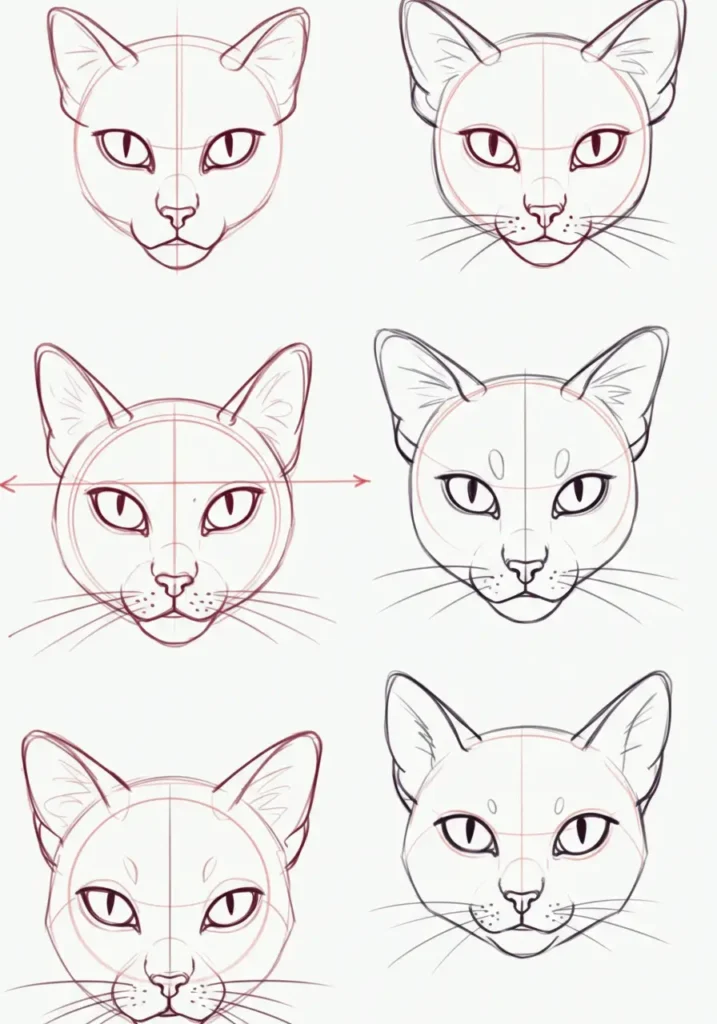
Draw almond-shaped eyes with angled corners. Add pupils (slits or round) and subtle iris patterns for realism.
Step 4: Nose and Mouth
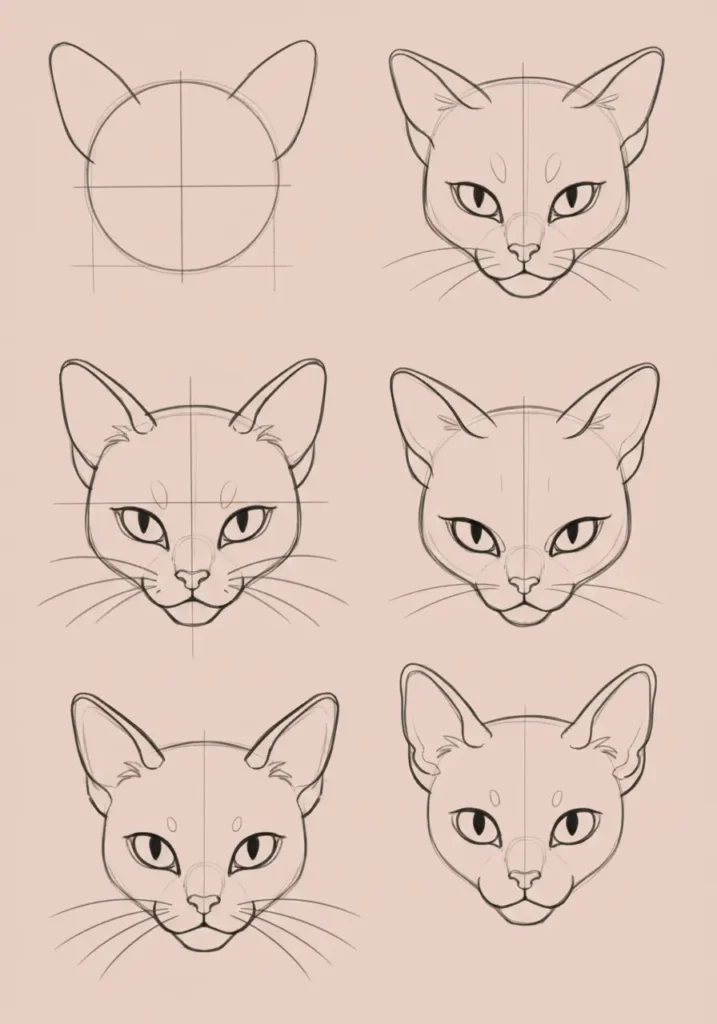
Draw an inverted triangle nose with comma-shaped nostrils. Add a gentle mouth curve below.
Step 5: Ear Construction
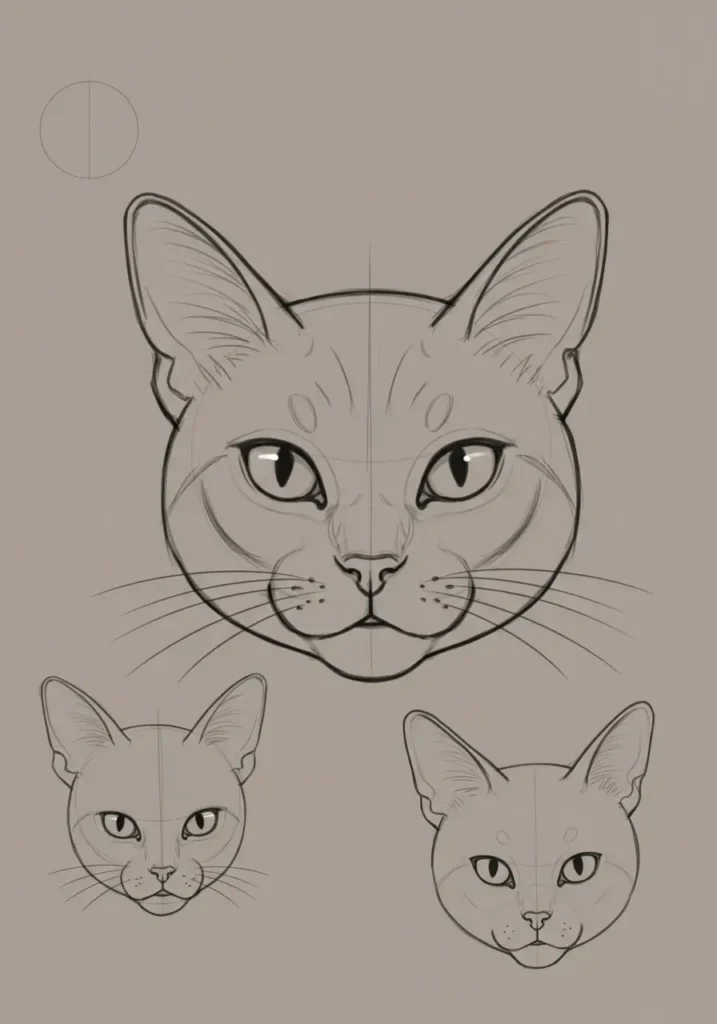
Draw tall triangular ears with rounded tips, spaced one ear-width apart. Add inner ear curves and a dark canal.
Drawing Different Cat Poses
Sitting Cat Profile

Start with a tilted oval for the body and a smaller head circle. Draw straight front legs and folded back legs. Wrap the tail around the paws or along the body. Connect the neck with gentle curves, as seen in Artists Network.
Stretching Cat

Draw an S-curved spine, with extended front legs and planted back legs. Show prominent shoulder blades and an upward-curving tail for balance.
Sleeping Cat

Use a large circle for the curled body. Tuck the head against the body or paws. Place paws under or around the face for a cozy look.
Related Posts: How to Draw a Flower Step by Step: Complete Beginner
Mastering Cat Fur Textures
Fur direction follows body contours. Build texture in layers, starting with shadows, then medium tones, and finally highlights. Use short strokes for the face and longer strokes for the body.
| Fur Type | Technique |
|---|---|
| Short Hair | Short, quick strokes; blend edges softly. |
| Long Hair | Group strokes in clumps; add highlights on raised areas. |
| Tabby Patterns | Vary stripe width; integrate with fur texture. |
Drawing Different Cat Breeds
Persian Cat
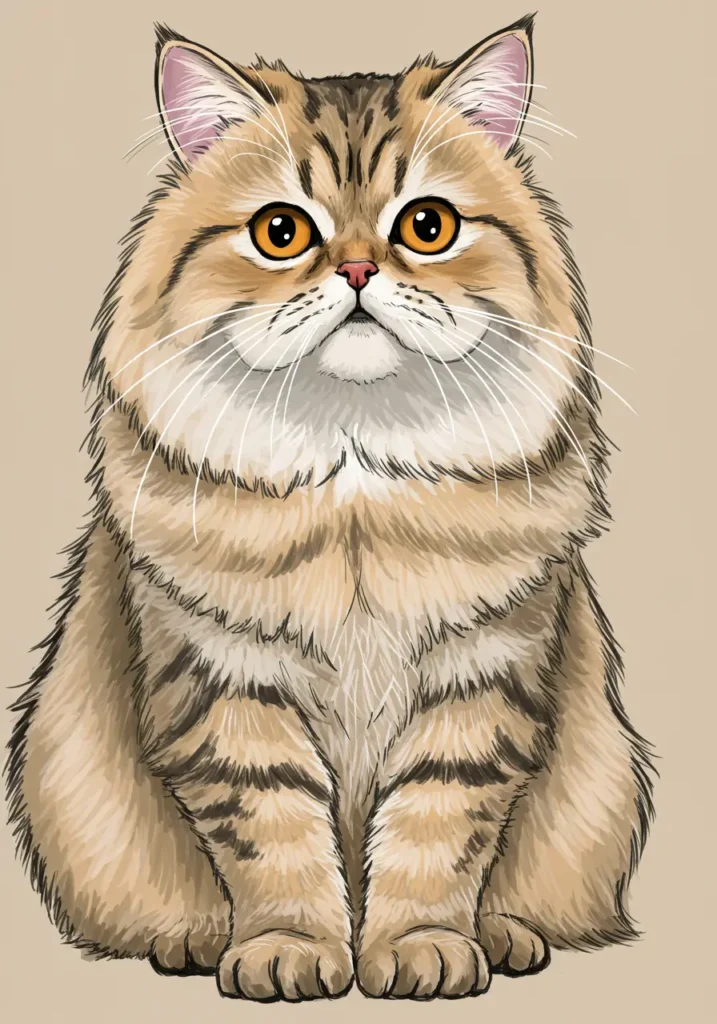
Draw a flat face with wide-set eyes and long, flowing fur. Use sturdy body proportions and vibrant colors, as noted by Better Homes & Gardens.
Siamese Cat
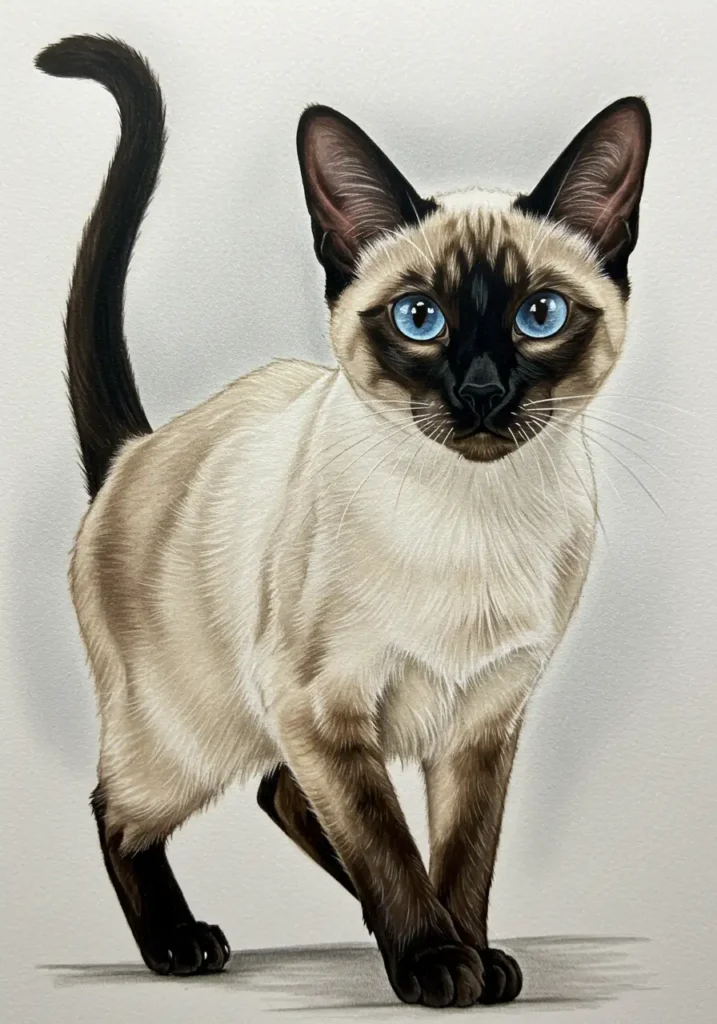
Show darker points on ears, face, legs, and tail. Draw a lean body with large ears and blue eyes for an alert look.
Maine Coon
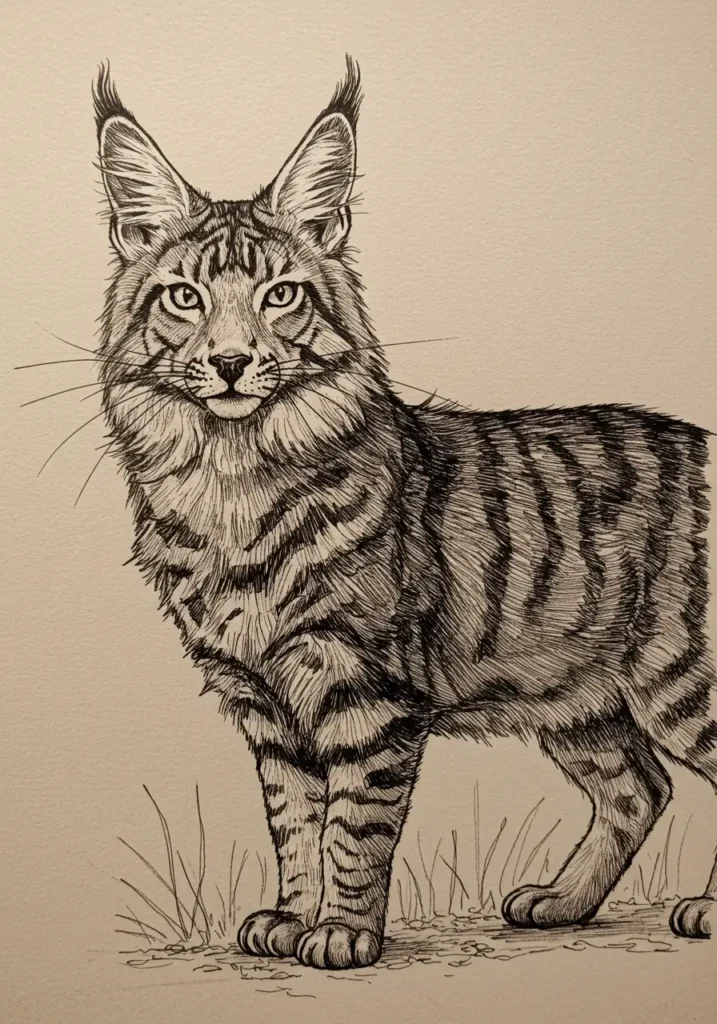
Use large proportions with ear tufts, a chest ruff, and a plume-like tail for a majestic appearance.
Common Cat Drawing Mistakes
| Mistake | Solution |
|---|---|
| Oversized Heads | Measure head-to-body ratio (1:4-5). |
| Human-like Eyes | Use almond shapes with angled corners. |
| Uniform Fur | Follow body contours with varied strokes. |
Advanced Cat Drawing Techniques
Capture personality with direct eye contact or angled gazes. Use ear positions (forward for alertness, flat for fear) and subtle whisker angles. For dynamic poses, study weight distribution and use foreshortening for movement toward the viewer. Simple backgrounds keep the cat as the focal point.
Building Your Cat Drawing Skills
Practice 15–30 minutes daily with gesture studies and detailed focus on eyes or fur. Collect reference photos organized by pose and breed. Share your work on Instagram or sell prints on Etsy.
Drawing a cat requires patience and observation. Start with simple poses and progress to complex breeds and dynamic movements. Each sketch builds your understanding of feline grace, leading to expressive, lifelike artwork that captures their unique charm.
Frequently Asked Questions
1. What’s the most challenging part about learning to draw a cat?
Capturing the flexible spine and natural grace while keeping accurate proportions is tough. Practice gesture drawings to show the spine’s S-curve in various poses.
2. How do I make cat eyes look realistic?
Use almond-shaped eyes with angled corners, off-center pupils, and subtle iris patterns. Add tear ducts and soft shadows around the eye socket for depth.
3. What’s the best way to practice drawing cat fur?
Start with simple strokes following fur direction. Layer shadows, then mid-tones, and finish with highlights. Focus on small areas like the face before tackling the whole body.
4. How can I draw different cat breeds accurately?
Study breed-specific features like Persian’s flat face or Siamese’s sleek body. Collect reference photos and practice unique traits like ear tufts or color points.
5. Should I learn to draw cats from photos or real life?
Photos offer static references for beginners, while real cats show movement and personality. Start with photos, then draw from life for dynamic, expressive results.
